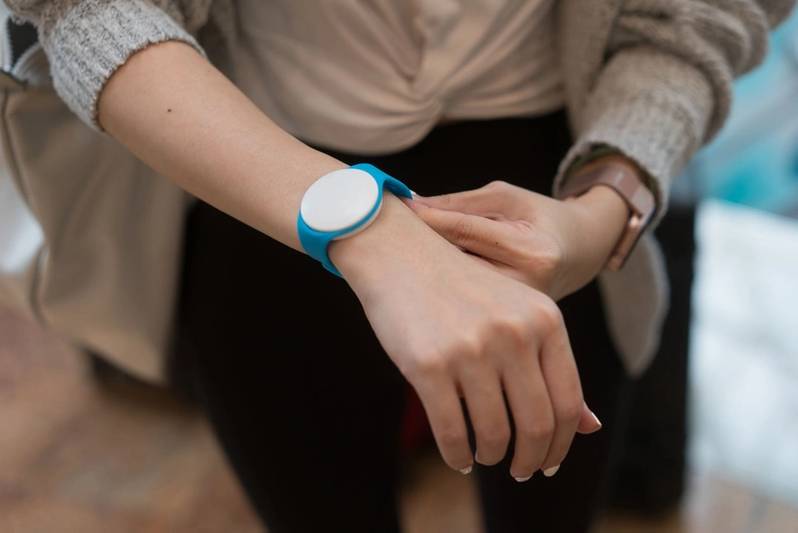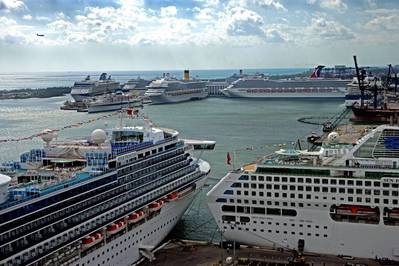Inside Cruise Shipping's Fight for Survival
In early 2021, the somber news from the cruise sector continued. For some cruise brands, their own version of “lockdowns” will have spanned an entire year. By late January, 2021, Carnival and others were hesitantly pegging their restarts for April/May 2021, and for some markets, late summer, under a Conditional Sail Order promulgated late last year by the Centers for Disease Control and Prevention (CDC).
What else to do but look ahead?
In preliminary earnings guidance, Carnival Corporation (NYSE: CCL), CEO Arnold Donald, stressed that the market leader was “… well positioned to capitalize on pent up demand and to emerge a leaner, more efficient company, reinforcing our industry leading position.” The damage wrought by the industry’s shutdowns in the wake of the Covid-19 pandemic has been staggering, spawning a defensive posture of vessel scrapping, delayed vessel deliveries, fresh equity raises, refinancing of existing debt with high yield obligations, or even sales of brands to outside investors (as CCL competitor RCL did with its Azamara brand), to bolster cash reserves for riding out the financial storm. Carnival Corporation, with 87 vessels in brands including Cunard, Princess and Holland America, was reporting a loss of $2.2 billion during the quarter ended Nov 30, 2020; Royal Caribbean, with a smaller fleet (61 vessels at end 2020) and a roster including the Celebrity brand, booked a loss exceeding $1.3 billion during the quarter ended Sept 30.
In terms of cash burn, Carnival said average monthly cash burn rate for Q4 2020 was $500 million, and the Q1 2021 number 2021 to be approximately $600 million/month, and its Chief Financial Officer noted that, with $9.5 billion in cash at end 2020, “we… have the liquidity in place to sustain ourselves throughout 2021, even in a zero-revenue environment.”
The CCL assertion comports with security analyst estimates; Truist Securities (BB&T Corporation and SunTrust Banks), in a late 2020 research briefing, estimated that the company had 17 months of staying power. Their New York-based analysts, C. Patrick Scholes and Gregory J. Miller, wrote: “Investors at the moment, despite continued bad news on sailing delays, consensus estimate cuts, and dilutive equity and debt offerings that impair longer term ability to drive earnings, are looking past these negatives and taking the (very) long view on the eventual vaccine-driven recovery.” In the same report, after noting the uncertainties regarding the timing of widespread vaccine roll-outs, they cautioned that: “…we believe that cruise companies will need to raise additional capital to stay afloat, further depressing earnings.” An example of the deleterious impact on earnings came with RCL’s $201 million sale of Azamara to the private equity firm Sycamore Partners- with RCL noting: “The transaction will result in a one-time, non-cash impairment charge of approximately $170 million.”
 “The operational impact of the health protocols are significant as solutions need to be developed for each of the areas of concern in health management. These changes could include creating or updating protocols, rearranging or establishing passenger and crew flow patterns, updating available medical response and isolating capabilities and adding equipment in line with the updated protocols.”
“The operational impact of the health protocols are significant as solutions need to be developed for each of the areas of concern in health management. These changes could include creating or updating protocols, rearranging or establishing passenger and crew flow patterns, updating available medical response and isolating capabilities and adding equipment in line with the updated protocols.”
Joep Bollerman, LR’s Global Manager for Passenger Vessel Support
What might the future hold?
CCL’s Mr. Donald, in the earnings guidance, stressed that: “The company expects future capacity to be moderated by the phased re-entry of its ships, the removal of capacity from its fleet and delays in new ship deliveries.” Executives in the sector were quick to point to “pent up demand”, but the demand side of the voyage back to pre-pandemic levels will be a long one. The consultants Maritime Strategies International (MSI), wrote, in a January, 2021 report: “This year, we expect cruise passenger levels to increase to 11.9m, an increase of 59% year on year, but still substantially below the 29.6m cruise passengers recorded in 2019.” The majors were pushing back start dates for itineraries originating in the U.S. In a January, 2021 report, the Truist analysts mentioned the second half of 2021 as a possible start date for “revenue sailings” out of North American cruise hubs.
What will Change?
As cruising resumes in a big way, what will be different on the vessels and also at ports serving them? The short answer is “quite a bit.” Throughout the business, all the shipowners are implementing an array of new protocols informed by the medical profession.
As the pandemic began to spread, in March 2020, the Cruise Line Industry Association (CLIA) had made unsuccessful efforts to ward off impending shutdowns of the business, including a meeting with then Vice President Mike Pence (head of the Trump administration’s Coronavirus Task Force). Shortly thereafter, two other cruise majors, Royal Caribbean (RCL) and Norwegian Cruise Line Holdings (NCLH), joined forces and assembled a team of medical experts, the Healthy Sail Panel, with the mission “…to closely examine every aspect of the cruise ecosystem, and recommend the most effective, scientifically sound ways to make the cruise experience healthier and safer.”
In September 2020, the panel, which also included representatives from the operational side of RCL and NCL, then submitted a 70 page report, to the CDC, which had issued the first “No sail” orders in March (and asked each line for plans to keep crews safe), providing recommendations “…rooted in the best scientific and public health information available…”.
The panel’s guidance dealt with five areas, beginning with screening, testing and exposure reduction for passengers, onboard matters (sanitation, ventilation, responses and contingency planning), safety for crews, and matters related to safety at destinations. The Healthy Sail effort underscores the sector’s important efforts to forge real links with the mainstream health establishment; one of its two co-chairs, Michael Leavitt, now running a consultancy with a Washington, D.C. presence, was Secretary of Health and Human Services in the early 2000’s in the George W. Bush administration.
The classificatoin societies are also playing a leadership role. One important initiative is the Cruise-Safe certification, a joint undertaking of the Class DNV GL and the Singapore Tourist Board.
According to DNV GL: “The CruiseSafe certification will provide assurance of high standards of health and sanitation, ensuring that stringent and enhanced hygiene and safety protocols are in place at all touch points during a vessel’s journey. The framework is built upon DNV GL’s Certification in Infection - Maritime (CIP-M) program and incorporates global health and safety standards as well as national safe management measures and certification guidelines.”
They explain that CIP-M “…provides a framework to help maritime companies improve their management of infection risk, demonstrating that procedures and systems are in place for the proper prevention, control and mitigation of infection.”
As cruising returned in Singapore, it was mandatory for cruise lines to obtain the CruiseSafe certification before they are allowed to resume operations out of the Lion City’s cruise terminals. The CruiseSafe program was implemented by Dream Cruises (Genting), whose World Dream departed Singapore on a “Super Staycation” cruise in early November, with 50% capacity. RCL is also offering short cruises out of Singapore, on its Quantum of the Seas, initially with a maximum 50% of capacity.
Lloyds Register (LR) has developed Class Notations SHIELD and SHIELD+, explaining that SHIELD and SHIELD+ are voluntary ShipRight descriptive notations that provide a detailed survey and inspection of the key areas where health risks are elevated, as well as against the six categories (highlighted in the graphic). Additionally, LR is offering Marine Stay Safe, which it describes as “….a tailored health verification program that can help determine if vessels and marine-based structures are maintaining high levels of safety, cleanliness, quality and good hygiene…,” also providing “ a consistent review of policies against any of the six categories to highlight enhanced risk areas so that operators can make the necessary improvements related to operational efficiency and processes, especially for passenger and crew safety.”
LR, which consults with the Institute of Cruise Ship Medicine (ICSM), points out that it “…has offered health risk mitigation services within the land-based hospitality industry for many years…” and views its activities directed at the cruise business as an extension of its work with hotels.” Joep Bollerman, LR’s Global Manager for Passenger Vessel Support , based in Miami, Florida, told Maritime Reporter that “The operational impact of the health protocols are significant as solutions need to be developed for each of the areas of concern in health management. This may be a confirmation that already existing protocols are sufficient but in many cases action is required, ranging from some fine tuning or major changes to be implemented. These changes could include creating or updating protocols, rearranging or establishing passenger and crew flow patterns, updating available medical response and isolating capabilities and adding equipment in line with the updated protocols.”
Saga Cruises, a UK-based niche brand aimed at the 50+ age bracket, has come onboard, with SHIELD, pointing out that: “Ultimately LR’s continued assurance enables us to demonstrate an enhanced level of health safety to our passengers, crew and other stakeholders.” The marketplace seems to agree; after a late January announcement requiring that its customers be fully vaccinated, its bookings (with a start date pushed back into May) have reportedly surged. Other cruise lines were said to be looking into a vaccine requirement.
Among the Carnival brands, a January, 2021 filing indicated that: “Costa and AIDA have a comprehensive set of health and hygiene protocols that has helped facilitate a safe and healthy return to cruise vacations… modeled after shoreside health and mitigation guidelines as provided by each brand’s respective country, and approved by all relevant regulatory authorities of the flag state, Italy. Protocols will be updated based on evolving scientific and medical knowledge related to mitigation strategies. Costa is the first cruise company to earn the Biosafety Trust Certification from Registro Italiano Navale (RINA). The certification process examined all aspects of life onboard and ashore and assessed the compliance of the system with procedures aimed at the prevention and control of infections.”
RINA explains that: “The Biosafety Trust Certification is based on the International Standard Organization’s systematic approach to management systems combined with scientific best practices against the spread of infection” Costa and AIDA were both poised for restarting cruises in March, 2021. MSC Cruises, privately listed, was resuming Mediterranean sailings out of Italy for its MSC Grandiosa and MSC Magnifico.
 Royal Caribbean's Tracelet. Photo: RCCL
Royal Caribbean's Tracelet. Photo: RCCL
Investing in Upgrades
Across the fleets, capital investments have been made, including redesigned and upgraded medical facilities, with specific isolation areas onboard. Reconfigured ventilation systems are bringing in air from the outside, where possible; where inside areas use recirculated air, filters have been upgraded to capture smaller particles. Ultraviolet irradiation and electrostatic spraying have been added to the disinfecting mix. Joep Bollerman from Class LR told Maritime Reporter: “Crew Training and familiarization is an important step once protocols are finalized and added or modified equipment maintenance needs to be included in existing planned maintenance solutions to ensure equipment reliability.”
Digital technology is playing a role as well; electronic check-ins were already on offer, pre- pandemic. Now, there are new possibilities, Carnival’s ground-breaking Ocean Medallion (used on the Princess brand), designed for enhanced passenger experiences, can also provide a tool for contract tracing and tracking.
In late 2020, Royal Caribbean introduced its Tracelet, a wristband that was debuted on Quantum of the Seas. Besides tracing, its capabilities enable better management of onboard social distancing. Smart-phone applications, some already introduced pre-pandemic, will take on greater importance as the cruise brands seek to reduce paper flows (and the need to physically sign documents) and to reduce touching of surfaces (for example a light-switch in a cabin).
The cruise ports are also making changes, expanding contactless interfaces, stepping up cleaning protocols, and building social distancing into their procedures. At Port Everglades, in Florida, digitalization has brought a degree of seamlessness to the transition from terminal to vessel, with the port saying: “We continued building a new state-of-the-art parking garage through the pandemic so it would be ready when cruising resumes. The Heron Garage will service Terminals 2 and 4 in the northern section of the Port. Terminal 2 is Princess Cruises’ Ocean Medallion prototype.”














